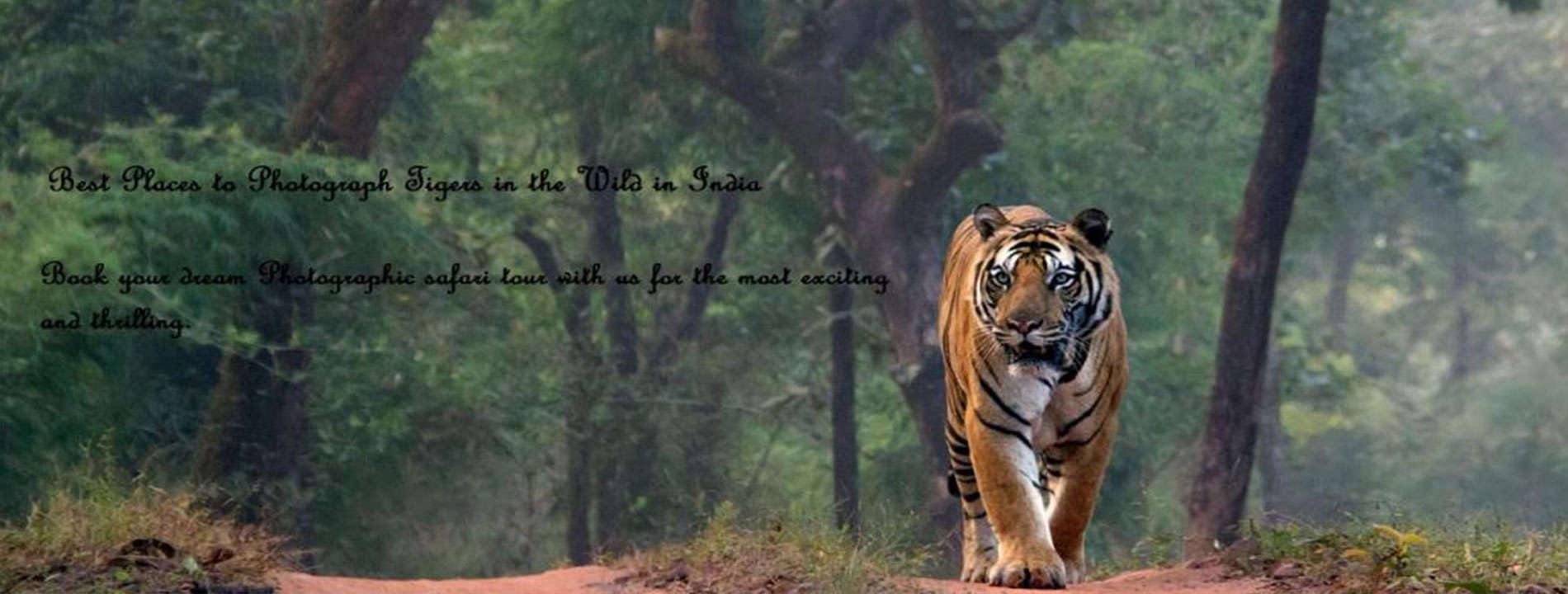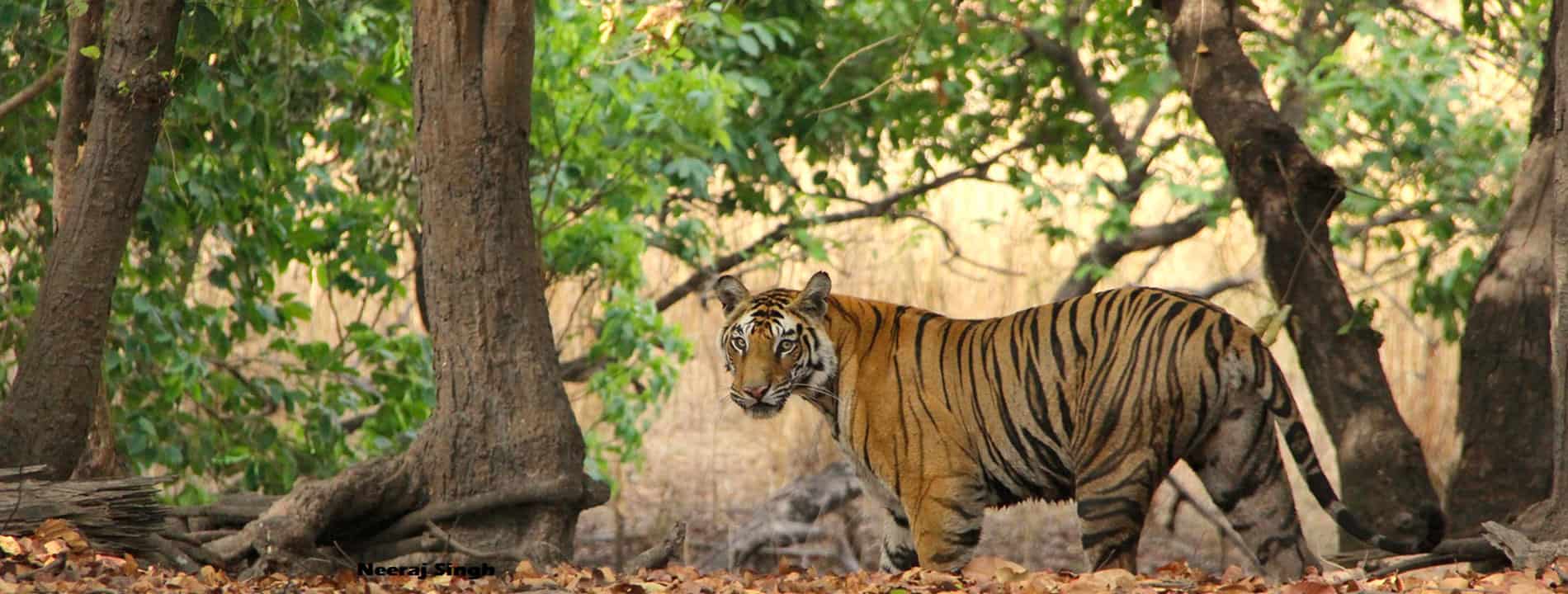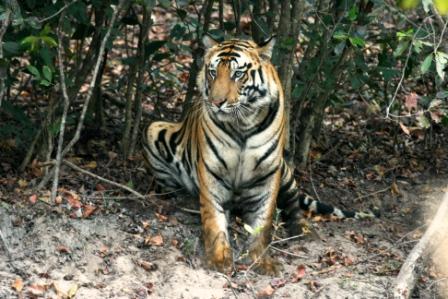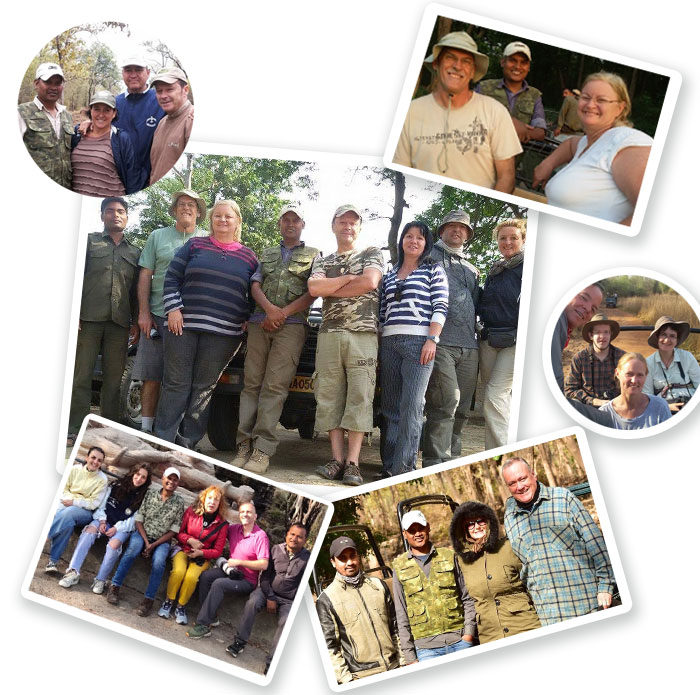Temples and Heritage of Madhya Pradesh
Khajuraho Of treatise on stones
Known for their exquisite architecture, Khajuraho temples lie in the state of Madhya Pradesh in India.
Khajuraho TemplesThey are a masterpiece collection of carvings of the rock an assemblage at various Hindu temples that survive in the district of Chhattarpur.
The carvings depict Kamasutra and are a sex treatise on rocks. The temples date back to 10th century and 11 th century AD and were built by the Chandelas who ruled there. Khajuraho was the capital city of the Chandelas, but is a tourist village now.
Khajuraho temples sheer beauty and size enchant the tourist with their magnificent splendor. The historical masterpieces number about twenty at present of the eighty that were supposed to have been built.
They are the finest examples of Indo Aryan architecture. Apart from depicting day to day life of the people and Gods Goddesses and heavenly damsels the stonework is dominated by women and bizarre sexual acts.
Sexual positions are explicitly carved out on the rocks of men women and animals. The works do not by any means suggest hard core propagation of sexual pleasure but are said to be treatise on sex for the uninitiated.
The tourism infrastructure is well developed at Khajuraho with hotels of all makes and kind. Khajuraho is an airport directly connected to New Delhi and Mumbai. It is connected by railhead from Satna town. Panna National Park lies few kilometers from the temple city while Bandhavgarh National Park is few hours’ drive.
Gwalior Hermit on a Hilltop
The seat of Scindia’s since 18th century this historic town in Madhya Pradesh was witness to many war cries and uprisings. The palace of Maharaja Scindia, Gwalior Fort and numerous Chattris dominate Gwalior’s landscape. Bereft of the title in independent India the Royals play a key role in Gwalior’s affairs political and developmental.
Scindia Fort
Tansen Music festival held every year attracts classical musicians and vocalists – the top proponent of Indian classical music – to this town. Tansen the famous musician at Akbar’s court was buried here and his mausoleum is an architectural masterpiece worth visiting. . There are many places of interest fro sightseeing especially forts, palaces and temples many of which date back into history.
There is an interesting sound and light show held every evening at the Gwalior Fort. Besides the fort must visit places are Jai Vilas Palace museum, Teli-ka-Mandir, Sasbahu temple, Man Singh Palace and Chatarbhuj Mandir.
Gwalior occupies significance as Jain worship center and place of Hindu architectural monument at peak. Significantly the town is well known for its traditional classical music, arts and crafts besides architecture. Home town to vocalist and musicians like Amjad Ali Khan of repute the fine arts still prevail. But like other major towns Gwalior is on an industrialization spree and is a major hub of economic activity.
Reaching Gwalior: The city is well connected with New Delhi by railway network and air. Buses ply between various towns nearby for road travel.
Pachmarhi Retreat
Among the necklace of steep undulating hills sits atop the little town of Pachmarhi. Its grandeur unfolds as you explore the steep mountains and deep valleys. Pachmarhi is one of the finest hill retreats on Earth. Unexplored, pristine and full of adventure.
Pachmarhi Retreat
Pachmarhi is also known as the Queen of Satpura Hills and was earlier a contiguous part of Central Indian Highlands as described by Capt. James Forsyth. Pachmarhi exhibits classic wonders of natural formations. The hill station offers finest trekking options among the densely forested hills and valleys.
One can explore the forest or rejoice in cool clear waters of fairy pool and dip under cascading waters of numerous falls. Apart from natural wonders Pachamari Hill Station has ancient Shiva temples and pristine prehistoric caves.
What to see?
- Pandav Caves ◦Satpura National Park – Tiger Reserve.
- Rajat Prapat (Silver Fall) – dips 700 feet into deep valley.
- Prehistoric cave painting that date 10000 years.
- Bees Fall.
- Pandav Caves.
- ◦Gupt Mahadev – Abode of Lord Shiva.
- Chauragarh – Abode of Lord Shiva.
- Dhupgarh (Sunset Point) – At 1100 m the highest peak.
- Handi Kho (Canyon).
- Priyadarshini Point.
- Apsara Fall.
- Jatashanker Cave.
- Big fall.
- Duchess Falls.
Pachmarhi is a biosphere reserve and its biodiversity is stunning with many rare floral elements some with high medicinal value. It 45 km from Pipariya Station in the district of Hoshangabad in the state of Madhya Pradesh.
Orchha Temple by the River
Orchha Hindu TemplesOrchha is picturesque destination of palaces and temples with history etched on the fortified walls. A relic town of ancient India it is parked on Betwa River. Across the bridge there are three seventeen century palaces. The palaces excel in architecture and the temples exhibit unique Hindu architecture that is typical of Central Indian monuments.
Palaces worth seeing are the Hardol Palace, Jehangir Mahal, Raj Praveen Mahal and Raj Mahal. Raja Ran Temple is unique with pink and gold domes. Chaturbhuj temple, Lakshmi Naryan Temple exhibit lovely murals. South of Betwa River cenotaphs and chhattris are worth a visit.
Orchha is at its scenic best during the rains whence romance filled atmosphere lures the tourists to this magical kingdom of the past.
There are many places to stay at Orchha which cater to all budgets and price ranges. Most tourist find accommodation at up market accommodation which are priced from mid range upwards. There are few budget resorts as well. Food style is basically vegetarian with thalis also available for those with traditional taste.
The town is well connected by bus and rail with Jhansi. Jhansi is connected with with major towns with an established network.
Sanchi Of Stupas Resurrected
Built over relics of Great Buddha the stupas lost their glory and where subsequently ravaged during the passage of time. Rediscovered and resurrected by Sir John Marshall a British during the period of Raj.
Sanchi Stupa
The Great Stupa was built during the reign of Emperor Asoka in 3rd century BC. During the Satvahan period in 70 BCE structural changes were carried on stupas which were ravaged during the rule of Pusyamitra Sunga.
Subsequently more temples were built especially during the Gupta period in 12th century AD. The temples are prized Buddhist heritage structure.
The stupas are typically domed structures meant for circumambulation by the pious Buddhist followers. Carved decorations on magnificent gates welcome the pilgrims. The stupas depict life of Buddha and at places in zoomorphic forms. Lot of depictions were carried out by devotees who donated generously.
Sanchi is located in the district of Raisen in the state of Madhya Pradesh in India. It is 46 kilometers from Bhopal the capital of Madhya Pradesh and about ten km from Vidisha and Besnagar towns. Bhopal is well connected by Air/Road and rail. This is the best way for tourists to reach the Sanchi Stupas.
Amarkantak Of Holy Rivers
Holy Narmada and River Son emerge from Amarkantak Hills in Vindhya and Satpura Ranges. This Maikal hill Resort called Amarkantak is at the height of 1000 meters above MSL. The Narmada meets the in Arabian Sea at Bharuch in Gujarat. It travels through a long distance in states of Madhya Pradesh and Gujarat. Other rivers that originate in Amarkantak Hills are Mahanadi, Amadoh, and Son and Johilla Rivers.
Amarkantak is pilgrimage town in Chattisgarh State and a hill station. It is hilly and densely forested. The pilgrim town abounds in wildlife especially at Achanakmar Sanctuary nearby. The weather is cool even in summer months. Amarkantak is best place to spend one’s holiday.
Places to see:-
- Kapildhara falls
- Origin of Son River
- Origin of Holy Narmada
- Water fall on Son River
- Son Muda the origin
- Narmada Temple at origin
- Ancient temples of Kalchuri era.
- Shiva or Jwaleshwar Temple
- Narmada at Amarkantak
Amarkantak is connected by road network and railway with Jabalpur in MP and Bilaspur town in Chhattisgarh. Jabalpur is an airport connected to New Delhi.
Mandu Joyous Retreat
Founded as a retreat by Raja Bhoj, in contemporary times Mandu is just that. After the Afghan invasion Mandu experienced a chequered history of rule and rulers, pleasure seekers and philanders.
Palace at Mandu
From the philandering and indulgence emerged great palaces and forts- playgrounds of the sultans.
Places to see Jahaz Mahal, Taveli Mahal, Jama Masjid, Hoshang’ tomb and Ashrafi Mahal. There are numerous Jain temples at Mandu for the pious to pay a visit.
A little distance away is the Baz Bahadur palace, Hathi Mahal and Rani Rupmati pavilion. The Mughals destroyed and converted Shiva temple into Nilkanth Palace. One can find the Baobab tree here, one of the few places in India where this tree is found.
Mandu is reachable from Indore which is a major town connected by aril and air. Buses ply between Mandu and Indore on regular basis.
Accommodation comes in all shapes and sizes according to one’s pockets. Mid range up market accommodation are more popular with the visitors to this quaint town in Central India
Ujjain Of nectar Gods & Demons
Kumbh Mela UjjainUjjain is one of the holiest city of Hindus who gather in large numbers during the Kumbh Mela. It is a religious gathering that takes place every twelve years on the banks of river Shipra. Known as Avantika during King Asoka’s time the holy city is centerpiece of Kalidasa’s famous work “Meghdoot”. Places of interest are the Mahakaleshwar temple dedicated to Lord Shiva. The idol enshrined is one of the twelve Jyotilinga naturally occurring lingams. The experience is magical as you wade through mazes of underground chambers and masses of holy pilgrims. The bells ring continuously amidst the chanting of holy prayers or mantra sending you unto a mystical trance.
Other temples which are a must visit are Gopal Mandir, Chintaman Mandir and Harsiddhi Mandir in Ujjain. Visit to the Ghats especially Ram Ghat which adds to your travel pleasure. Ujjain offers pilgrims near experience with Hinduism a learning experience of religious and spiritual awakening. The nearest town is Indore about fifty five kilometers. Indore is a commercial hub and is very well connected with New Delhi and other Metros and large towns. Road and rail network connects Ujjain with Indore and Bhopal the capital city of Madhya Pradesh.
Maheshwar Lord Shiva’s Abode
Maheshwar – Hindu Pilgrimage Located in the district of Khargone in Madhya Pradesh, Maheshwar is famous for its Jari Saris and handloom industry. Indore’s Holkar dynasty initiated the enterprise which is World famous today. The Saris draped by Indian women are also known as Maheshwari Sarees on the ancient name of the town. The Sarees have distinct design and patterns and are the prize catch of India’s glitterati. Being on the banks of Narmada, Maheshwar has lot of religious significance to the Hindus. Regular fairs and festival celebrations are the hall mark of the town. Major Hindu festivals like Teez, Naga Panchami, Maha Shivratri, Samowati Amawasya are celebrated every year with characteristic gaiety and aplomb.
Reaching Maheshwar: Nearest town is Indore which is approximately ninety kilometers. Indore is well connected by Air and Rail network. Bus service and taxi are available in Indore and surrounding places for Maheshwar.
Bhopal City of Raja Bhoj
The Capital City of MP
Lake at BhopalBhopal is called city of lakes as there many lakes large and small all over. The terrain steep hills, in between are lakes and tree lines and human dwellings. The Old Bhopal is more congested but is prime for traditional shopping and whole sale business.
Established by Raja Bhoj, Bhopal subsequently was over come by the Afghan rulers. Due to the Islamic influence that followed, mosques, tombs, forts and palaces were built by the Afghan rulers. The popular monuments display an architectural splendor of that era.
Bhopal sightseeing places:
- Jama Masjid
- Moti Masjid
- Birla Temple
- Van Vihar Nature Reserve
- Laxmi Narayan Temple
- Shaukat Mahal
- Upper & Lower Lakes
- Taj-Ul-Masajid
Bhopal offers luxury and budget in hotels and lodges. There are many three star hotels for up market clients. Shopping Malls and Arcades abound all over the city. The restaurants offer finest in Indian and continental cuisine.
Bhopal exhibits city’s mixed cultural influence brought about by years of historical rules and conquest. The weather is bitter cold winters and hot Indian summers.
Reaching Bhopal: Bhopal is connected to New Delhi by Rail and Air. It is well connected by road and rail to Indore nearby and many other major towns in India.
Bheraghat – Marble Rocks & Dhuandhar Falls Of Colors on Rocks
Marble Rocks Jabalpur River Narmada falls down at Dhuandhar Falls and then passes through at Gorge of colored rocks near Jabalpur. Known as Bheraghat or Marble Rocks, it is a picturesque boat ride betwixt marble stones of various hues of stunning colors.
The waters are mostly placid but turn rapid near the beginning of the gorge at Dhuandhar Falls. The boat ride is mostly serene till it reaches the Bandar Kudini a narrow passage between steep rocks of colored
Marbles
Most enjoyable boat ride is during the full moon night. Strands of moonlight falls on crevices and juttings on the rocks and enlivens the scenario. It is extremely romantic occasion.
Dhuandhar Falls is a mass of rapid waters of River Narmada tumbling down with great force into the gorge. Sprays of mist emerge like a blanket of smoke hence in Hindi Dhuan Dhar (Smoky Falls).
Shivpuri Summer Capital of the Lords
Shivpuri was the summer capital of erstwhile rulers of Gwalior. Shivpuri was under the domain of the Maharajas of Gwalior ever since. It is a district in the state of Madhya Pradesh in India.
Chhatris at ShivpuriThe Madhav National Park makes this place more popular in present times. Sakhya Sagar and Madhav Sagar lakes are the life support system of the National Park. Karera Bustard and Black Buck Sanctuary is on the way to Shivpuri town. Named after Lord Shiva this little township & district is a mini commercial hub and marketing center. The rules of Scindia’s began in year eighteen eighty four and ended whence India became republic. The Scindia’s built royal palaces, temples & domed shaped Chhattris. The built hunting lodges as well since the dense forests were favorite hunting ground of royalties. The George Castle built in British style inside Madhav National Park and Chandpatha lakes are worth a visit. Incidentally King George V for whom the castle was built for a Royal hunt did not visit. Marble cenotaphs offer view of exquisite workmanship to the visitors and are worth visiting.
Shivpuri Summer Capital of the Lords
Shivpuri was the summer capital of erstwhile rulers of Gwalior. Shivpuri was under the domain of the Maharajas of Gwalior ever since. It is a district in the state of Madhya Pradesh in India.
Chhatris at ShivpuriThe Madhav National Park makes this place more popular in present times. Sakhya Sagar and Madhav Sagar lakes are the life support system of the National Park. Karera Bustard and Black Buck Sanctuary is on the way to Shivpuri town. Named after Lord Shiva this little township & district is a mini commercial hub and marketing center. The rules of Scindia’s began in year eighteen eighty four and ended whence India became republic. The Scindia’s built royal palaces, temples & domed shaped Chhattris. The built hunting lodges as well since the dense forests were favorite hunting ground of royalties. The George Castle built in British style inside Madhav National Park and Chandpatha lakes are worth a visit. Incidentally King George V for whom the castle was built for a Royal hunt did not visit. Marble cenotaphs offer view of exquisite workmanship to the visitors and are worth visiting.
Other places of interest are:
- Narwar Fort – a fortress atop a hill about 41 km from Shivpuri. It was built by Kuchhwaha Rajput King.
- Tatya Tope Memmorial – Independence fighter was sentenced to death here.
- Survaya Ki Garhi – 20 km an old Temple of Lord Shiva. District Museum
- Sidheshwar Tenmples – A Temple of Lord Vishnu besides statues of Ganesh, Shiva, Parvati, Laxmi, Sri Ram, Krishna.
- Sultangarh Falls – 50 kms from Shivpuri on Parvati River. Pawa Water Falls
Reaching Shivprui: Well connected by Jhansi, Bhopal, Indore and Gwalior by road network. Gwalior and Jhansi are the closest railheads about 120 kms. Gwalior is well connected by New Delhi by flight service.












